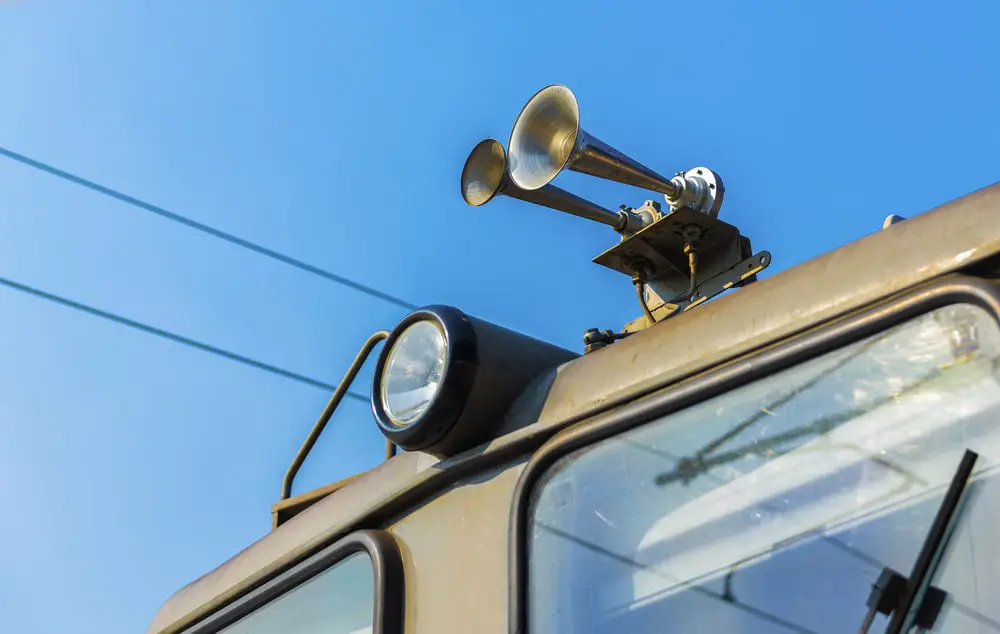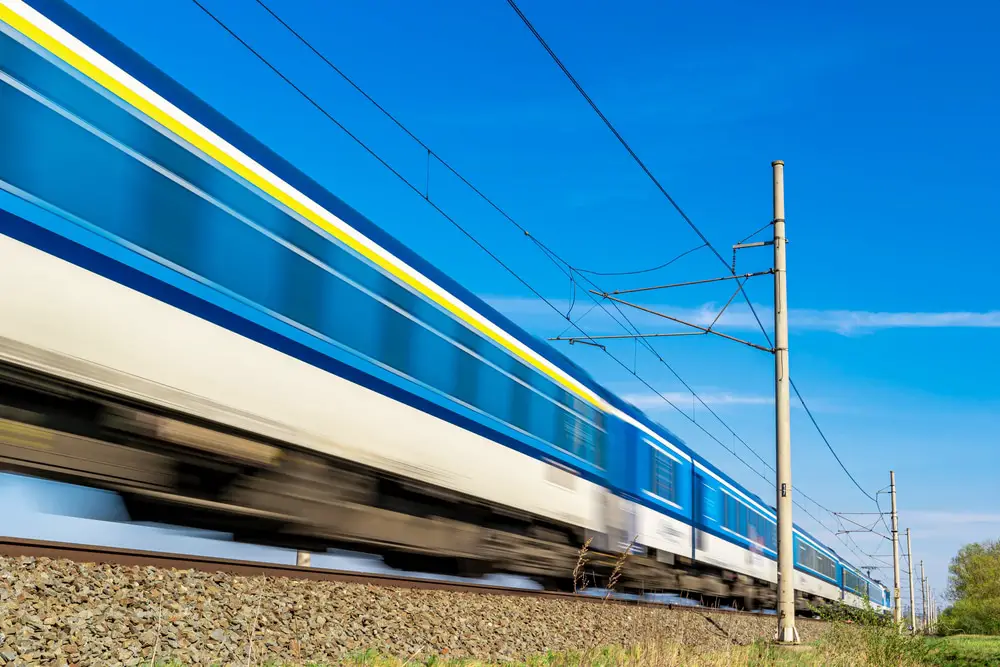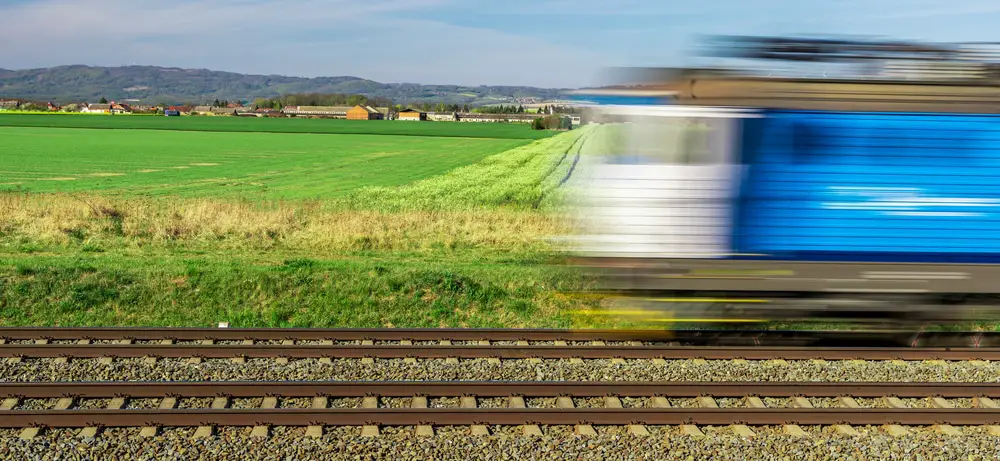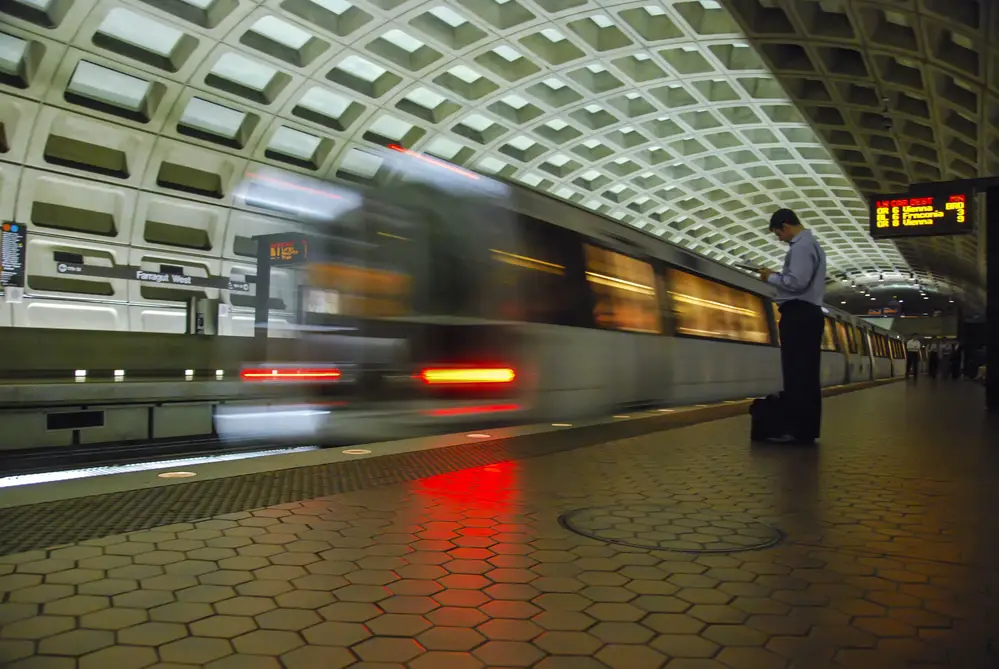So, why do trains blow their horns? Trains blow their horns to alert everyone that they are nearing the railroad crossing and also to warn oncoming cars, people, and animals in or near the path of the train.

If your house is near the railroad crossing, you may recognize the same sequence of horn blasts that trains make. Trains use various sequences to communicate with the public and fellow train operators.
Additionally, the Federal Railroad Administration (FRA) requires all trains to blow their horns at least 15 seconds before they reach all public grade crossings.
There’s a specific sequence and a standard range of volume that engineers need to follow that is set by the FRA.
However, there is mixed reactions regarding trains blowing their horns. Some people understand that this is for the safety of everyone. However, many people don’t like the sound of horns and establish quiet zones in their area.
Let’s dive in further to know more.
Main Reasons Why Do Trains Blow Their Horns
According to the mandate of the Federal Railroad Association (FRA), all trains are required by law to blow their horns every time they are nearing a public crossing, yard, or bridge.
This is to ensure the safety of pedestrians and motorists even when the crossing has lights and gates.
There are many reasons why trains sound their horns, but there are also regulations on how long and when a train should blow its horn.
The Northeast Operating Rules Advisory Committee (NORAC) regulates the operating rules of all railroads in North America.
Their rules on horn usage state that the horn should be used in the below cases:
- When crew members should apply brakes.
- Approaching a public crossing and a whistle post.
- Approaching tracks, bridges, or other areas where railroad workers are working.
- Passing and approaching standing trains.
- When there’s a person or animal on or around the track.
- Approaching curves, stations, or other areas where the engineer’s view is obscured.
- Passing or approaching freight or passenger trains.
- When the train is about to reverse.
- When the train is about to stop next to a passenger station.
- Stop Signal acknowledgment other than a fixed signal.
- Acknowledging other signals not provided for.
- Calling for signals.
- Providing protection for a crew member.

What is a Train Horn or Whistle?
Steam locomotives use an audible signaling device called an air whistle or train whistle. Whereas a modern electric or diesel locomotive uses a powerful air horn as its audible warning device.
However, most railroaders today still use the term whistle as their signaling practices.
Locomotives need horns to communicate to others that the train is approaching. Because railroads have fixed rails, trains are prone to collision.
Additionally, with the train’s weight and speed, it is impossible to stop immediately, it takes time for the train to come to a complete stop.
Hence, the importance of trains’ blowing their horns when they are near a crowded area. Furthermore, train whistles are more affordable compared to modern warning devices, so many railroads still opt to choose train whistles.
In the past, these whistles were pulled cords where engineers could sound their horns in their own style. Modern locomotives today have a push button switch which removes any possibility of changing the pitch and volume of the horn.
What Does it Mean When a Train is Honking?
Railroad workers use train whistles to communicate with other railroad workers. There are short and long whistle combination codes that have specific meanings.
These codes signify warning movements, passing instructions, and a safety signal. Also, even if modern trains use radios, locomotives still use these whistle codes in many scenarios.
North American railroads use the following whistle codes below. Take note that the “o” is for short sounds, and “–” is for long sounds.
| Sequence | Meaning |
| A succession of short sounds | Used when there are livestock or people on the track. This is also used when there’s an emergency on the train or tracks. |
| – | When the train is at a standstill, this signals the crew to equalize the air brakes and pressure. |
| – – | Signals that the train will release its brakes and move. |
| oo | Acknowledging any signal not provided otherwise. |
| ooo | When the train is moving, it signals that the train will stop at the next station. When the train is at a standstill, this signals that the train will back up or it acknowledges a hand signal to start backing up. |
| oooo | Request for the signal to be repeated if not understood or given to the train. |
| – oo | Signals as a warning that a timetabled train’s second section is following. |
| – ooo | Instructs the flagman to protect the rear of the train. |
| – – – – | Instructs the flagman to return from west or south. |
| – – – – – | Instructs the flagman to return from east or north. |
| – – o – | This is Rule 14L which is used in almost all railroad operations in the United States, Canada, and Australia. This means that the train is approaching a public grade crossing. |
| – o | Instructs the crew to inspect the brake system for sticking brakes and leaks. |

How Does a Train Use a Horn Approaching a Grade Crossing?
Grade crossings are areas where tracks cross public roads. These areas usually have a gate and flashing lights, only a gate, only flashing lights, or crossbucks to protect both the public and the train.
However, for many drivers, these warning signs are not enough for them to attempt to cross even when the train is approaching.
Train crews often find themselves tackling vehicles whilst crossing the tracks which lead to tragic accidents.
The FRA mandates that before the train occupies the grade crossing, the horn should be blown at least 15-20 seconds before the train reaches the crossing.
The protocol is to blow the horn in long, long, short, long sounds until the lead car or locomotive occupies the crossing.
For the train crews, they will know when they are nearing a crossing because there are whistle posts or signs along the tracks.
These signs can be a “W” which means “horn or whistle” and “W/MX” which means “whistle multiple crossings”.
What Are Opposition and Quiet Zones?
Although many people are fond of hearing the blow of train horns in the distance, other people are not.
In the past few years, several communities have gathered to put a stop to train horns, especially within small towns or heavily populated areas.
Railroads are against stopping blowing their horns for the safety of everyone which is why they introduced another option to appease the community.
Currently, trains use wayside horns in areas where the opposition is most notable. Wayside horns are quieter compared to the normal whistles.
However, this reduces the sound making it only detectable in areas close to the tracks.
Quiet Zones
Even though wayside horns are effective, there are communities that have “quiet zones”.
In these areas, engineers should only ring a bell when passing a crossing. You’ll see these quiet zones in local communities, but the accident rates of trains and cars colliding are higher.
Take note that trains can still blow their horns even when they are in quiet zones in certain conditions.
This can include when there’s construction work or track maintenance within 25 feet of the track, or in emergency situations.
The FRA is the only organization that can grant quiet zones. If you live in an area where you want to establish a quiet zone, talk with your local community leaders.

How Loud is a Locomotive Horn?
Train horns are very loud to ensure that everyone around them, and the ones driving towards the tracks, can hear them. The maximum level volume of a train horn is 110 decibels and the lowest is 96 decibels.
110 decibels is as loud as a power saw or a jackhammer and 96 decibels is as loud as a lawnmower or moving garbage truck.
If you’re close to the track, these sounds can be disturbing and irritating, especially in the middle of the night.
Why Do Trains Blow Their Horns? – Conclusion
Trains blow their horns to inform oncoming vehicles, people, and other locomotives that they are near.
There are various protocols and mandates that train engineers follow to communicate properly with other engineers.
Train horns are an essential part of communication and safety, even though they can annoy some people.
Toot Toot!

